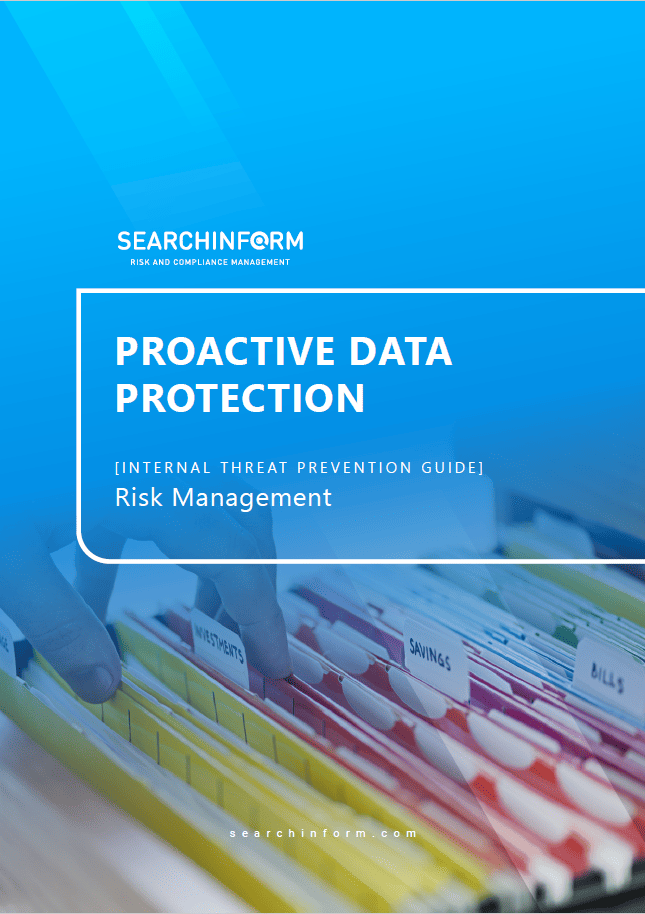Data Breach Incident Response: A Comprehensive Guide
- Understanding Data Breach Incident Response
- What is a Data Breach?
- The Importance of Incident Response
- Common Causes of Data Breaches
- Key Components of Data Breach Incident Response
- Preparing for a Data Breach: Key Steps to Ensure Swift Response
- Anticipating the Inevitable: Why Preparation is Crucial
- Building Your Response Team: The First Line of Defense
- Developing a Comprehensive Incident Response Plan
- Investing in Training and Simulation Exercises
- Leveraging Technology for Rapid Detection and Response
- Communication: Keeping Stakeholders Informed
- Learning from Past Incidents: Continuous Improvement
- Stay Prepared, Stay Resilient
- Steps in Data Breach Incident Response: Navigating the Digital Crisis
- Initial Detection: The First Alarm
- Identification: Confirming the Breach
- Containment: Stopping the Spread
- Eradication: Removing the Threat
- Recovery: Restoring Normalcy
- Notification: Informing Stakeholders
- Post-Incident Analysis: Learning and Improving
- Documentation: Recording the Response
- Continuous Improvement: Evolving the Response Plan
- Post-Incident Analysis: The Key to Future-Proofing Your Data Breach Incident Response
- Understanding the Breach: A Deep Dive
- Evaluating the Response: What Worked and What Didn’t
- Learning from Mistakes: Turning Failures into Strengths
- Implementing Changes: Strengthening Your Defenses
- Communication and Transparency: Keeping Stakeholders Informed
- Documenting the Process: Creating a Comprehensive Record
- Continuous Improvement: The Road to Resilience
- Case in Point: Real-World Example
- The Power of Post-Incident Analysis
- How SearchInform Enhances Incident Response: A Strategic Advantage
- Proactive Threat Detection: Staying One Step Ahead
- Real-Time Alerts: Immediate Awareness
- Comprehensive Data Monitoring: Visibility Across the Board
- Automated Responses: Speed and Efficiency
- Detailed Forensics: Understanding the Breach
- User Behavior Analytics: Identifying Insider Threats
- Customizable Policies: Tailored Security Measures
- Incident Reporting: Clear Communication and Documentation
- Case Study: Real-World Impact
- Conclusion: Fortifying Your Defenses with SearchInform
-
-
-
-
-
-
- Understanding Financial Statement Fraud and Cybersecurity
- Combatting Fund Transfer Fraud with Cybersecurity Measures
- Combatting Invoice Fraud: Cybersecurity Strategies for Businesses
- Mobile Payment Fraud: Understanding the Risks and Prevention Strategies
- Online Banking Fraud: How to Stay Protected
- Understanding Payment Card Fraud and How to Prevent It
- Cyber Tax Fraud: Understanding and Preventing It
- Understanding Transaction Fraud in Cybersecurity
-
-
-
-
-
-
-
-
-
-
-
- Breach Attacks: Comprehensive Guide
- Cyber Attacks on Banks: Threat Landscape and Countermeasures
- Understanding Cyber Attack Vectors: the Anatomy of Cyber Threats
- Cyber Attacks in Healthcare
- Understanding Cyber Attacks on Critical Infrastructure
- Combatting Government Cyber Attacks: Strategies and Solutions
- State-Backed Cyber Attacks: Insights and Solutions
- Supply Chain Attacks
- Cyber Attack Prevention: Practical Tips and Solutions
- Types of Cyber Attacks: Understanding the Threats
-
-
- A Comprehensive Guide to Access Control Lists (ACLs)
- The Threat of Broken Access Control: How to Protect Your Systems?
- Discretionary Access Control (DAC)
- Understanding the Core Concepts of Mandatory Access Control
- Network Access Control: Key Strategies and Implementation Tips
- Understanding Non-Discretionary Access Control (NDAC)
- Understanding Access Control Policies for Enhanced Security
- Role Based Access Control (RBAC): A Comprehensive Guide
- Rule Based Access Control (RuBAC): A Comprehensive Guide
-
- Biometrics: What Is It and How Does It Work?
- What is Data Access and Why is it Important?
- What is Data Access Control (DAC)?
- What is Federated Identity and Federated Identity Management?
- IAM: Identity and Access Management
- Machine Identity Management
- Microsoft Identity Manager (MIM): A Comprehensive Overview
-
-
-
-
-
-
- Nonpublic Personal Information: What It Is and Why It Matters
- PII Data Classification: Importance, Challenges, and Best Practices
- Personal Information Protection: How to Protect Your Personal Information
- PHI vs PII: A Comparative Analysis of Protected Health Information and Personally Identifiable Information
- Understanding Personally Identifiable Information (PII) Protection
-
-
-
-
-
-
-
-
-
-
-
-
Understanding Data Breach Incident Response
In today's digital age, data breaches are an ever-present threat to organizations of all sizes. When sensitive information is compromised, the repercussions can be severe, affecting a company's reputation, financial standing, and customer trust. This is where data breach incident response comes into play, acting as a crucial process for mitigating damage and ensuring swift recovery.
What is a Data Breach?
A data breach occurs when unauthorized individuals gain access to confidential information. This can include personal data, financial records, intellectual property, and more. Data breaches can happen through various means such as hacking, phishing, malware, or even physical theft. The impact of a data breach can be devastating, making an effective data breach incident response strategy essential for any organization.
The Importance of Incident Response
Imagine the panic and chaos following a data breach. Without a well-defined incident response plan, this chaos can lead to delayed reactions, increased damage, and higher costs. Data breach incident response involves a series of actions designed to identify, contain, and remediate the breach. It's about being prepared to act swiftly and effectively, minimizing the harm to your organization and its stakeholders.
Common Causes of Data Breaches
Understanding the common causes of data breaches is vital for developing robust prevention and response strategies. Human error often tops the list—employees might fall for phishing scams or inadvertently expose sensitive data. Cyberattacks, such as ransomware and advanced persistent threats (APTs), are also significant culprits. Additionally, insider threats, whether malicious or accidental, can lead to breaches. Recognizing these causes allows organizations to tailor their data breach incident response plans to address specific vulnerabilities.
Key Components of Data Breach Incident Response
An effective data breach incident response plan should include several key components. First, preparation: establishing a response team and defining roles and responsibilities. Next, identification: detecting and verifying the breach as quickly as possible. Containment follows, aiming to limit the breach's scope. Eradication involves eliminating the breach's cause, while recovery focuses on restoring systems and services. Finally, lessons learned: reviewing the incident to improve future responses.
The ability to respond effectively to a data breach is not just about protecting data—it's about safeguarding your organization's future. By understanding what a data breach entails, recognizing its causes, and implementing a comprehensive incident response plan, companies can mitigate risks and ensure resilience in the face of cyber threats. Remember, in the realm of data security, preparation is the key to successful data breach incident response.
Preparing for a Data Breach: Key Steps to Ensure Swift Response
In the digital landscape, data breaches are not a matter of "if" but "when." As such, preparing for a data breach is essential for minimizing damage and ensuring a rapid recovery. A well-crafted data breach incident response plan can make the difference between a minor disruption and a catastrophic event. Here’s how you can gear up for a potential data breach with a proactive approach.
Anticipating the Inevitable: Why Preparation is Crucial
Imagine a fortress under siege. Without preparations—reinforced walls, trained guards, and a response strategy—the outcome is predictable: chaos. Similarly, preparing for a data breach ensures that when an attack occurs, your organization can act swiftly and decisively. Data breach incident response isn't just about reacting; it's about anticipating and planning.
Building Your Response Team: The First Line of Defense
A crucial step in preparing for a data breach is assembling a dedicated incident response team. This team should include members from various departments, such as IT, legal, communications, and human resources. Each member plays a vital role, from identifying breaches to communicating with stakeholders. Clear roles and responsibilities ensure that everyone knows what to do when a breach occurs, streamlining the data breach incident response process.
Developing a Comprehensive Incident Response Plan
A robust data breach incident response plan is the cornerstone of preparation. This plan should outline specific steps to take before, during, and after a breach. Key elements include:
- Identification: Establish procedures for detecting and confirming a breach.
- Containment: Steps to limit the breach's impact and prevent further data loss.
- Eradication: Methods for removing the breach's root cause.
- Recovery: Strategies for restoring systems and data to normal operation.
- Post-Incident Review: Analyze the incident to improve future responses.
By detailing these steps, organizations can ensure a structured and efficient data breach incident response.
Investing in Training and Simulation Exercises
Preparation doesn’t end with a plan on paper. Regular training and simulation exercises are vital for ensuring that your team is ready for a real-world scenario. Conducting mock data breach incidents helps identify weaknesses in your plan and improve your team’s response times and coordination. These exercises also keep data breach incident response skills sharp and top-of-mind.
Leveraging Technology for Rapid Detection and Response
Incorporating advanced technology into your preparation strategy can significantly enhance your data breach incident response capabilities. Tools such as intrusion detection systems, security information and event management (SIEM) systems, and data loss prevention (DLP) solutions like those offered by SearchInform can provide early warnings and automate aspects of the response. These technologies help in quickly identifying and containing breaches, reducing the potential damage.

Communication: Keeping Stakeholders Informed
An often overlooked aspect of data breach incident response is communication. Transparent and timely communication with stakeholders, including customers, employees, and regulators, is essential. A well-prepared communication strategy should be part of your incident response plan, detailing how to inform affected parties and what information to share. This transparency helps maintain trust and can mitigate reputational damage.
Learning from Past Incidents: Continuous Improvement
No plan is perfect, and every data breach incident response offers valuable lessons. Conducting a thorough post-incident review allows your organization to identify what went well and what didn’t. Use these insights to refine your incident response plan continuously. By learning from past incidents, you can improve your readiness for future breaches.
Stay Prepared, Stay Resilient
Preparing for a data breach is an ongoing process that requires vigilance, training, and continuous improvement. By establishing a dedicated response team, developing a comprehensive plan, leveraging technology, and conducting regular training, organizations can ensure they are ready to handle breaches effectively. Remember, a well-prepared data breach incident response strategy is not just about protecting data; it's about preserving your organization’s integrity and resilience in the face of inevitable cyber threats.
Steps in Data Breach Incident Response: Navigating the Digital Crisis
In an era where cyber threats loom large, understanding the steps in data breach incident response is vital for any organization. These steps guide the response team through the chaos, ensuring that actions are taken swiftly and effectively to mitigate damage. Here’s a detailed look at each step in the data breach incident response process.
Initial Detection: The First Alarm
The first sign of trouble often comes through automated alerts or unusual activity reports. Initial detection is the alarm bell that signals a potential data breach. This stage involves monitoring systems for any signs of unauthorized access, unusual data transfers, or other suspicious activities. The quicker a breach is detected, the faster the data breach incident response can begin.
Identification: Confirming the Breach
Once a potential breach is detected, the next step is identification. This involves verifying whether a breach has indeed occurred and assessing its scope. It’s crucial to determine what data has been accessed or compromised, how the breach happened, and which systems are affected. Clear identification is essential for directing the subsequent steps of the data breach incident response.
Containment: Stopping the Spread
Containing the breach is like building a firebreak to prevent a wildfire from spreading. Immediate actions are taken to isolate affected systems, limit data exfiltration, and prevent the breach from escalating. Short-term containment measures might include disconnecting compromised systems from the network, while long-term measures involve fixing vulnerabilities and enhancing security protocols. Effective containment is critical in minimizing the damage during a data breach incident response.
Eradication: Removing the Threat
After containing the breach, the next step is eradication—eliminating the root cause of the breach. This could involve removing malware, closing security gaps, and applying patches. It’s essential to conduct a thorough investigation to ensure that all traces of the breach are removed and that the attackers no longer have access. This step is crucial for preventing a recurrence and ensuring the success of the data breach incident response.
Recovery: Restoring Normalcy
Once the threat is eradicated, recovery begins. This phase focuses on restoring affected systems and data to normal operations. It involves rebuilding systems, restoring data from backups, and monitoring for any signs of residual issues. Recovery also includes communicating with stakeholders about the status of the incident and the steps taken to resolve it. Effective recovery is a testament to a well-executed data breach incident response.
Notification: Informing Stakeholders
Transparency is key in data breach incident response. Timely and accurate notification to all relevant stakeholders—customers, employees, regulators, and partners—is essential. Notifications should include details about the breach, the data compromised, steps taken to mitigate the impact, and measures being implemented to prevent future incidents. Proper communication helps maintain trust and comply with legal and regulatory requirements.
Post-Incident Analysis: Learning and Improving
After the breach has been contained, eradicated, and systems restored, it’s time for a thorough post-incident analysis. This involves reviewing the entire data breach incident response process to identify strengths and weaknesses. What worked well? What could have been done better? Conducting a detailed review helps in refining the response plan and improving the organization’s readiness for future incidents.
Documentation: Recording the Response
Documentation is a vital aspect of data breach incident response. Detailed records of the incident, actions taken, communications, and lessons learned should be maintained. This documentation serves multiple purposes: it helps in regulatory compliance, provides a reference for future incidents, and supports continuous improvement of the incident response strategy.
Continuous Improvement: Evolving the Response Plan
The final step in the data breach incident response is continuous improvement. The cyber threat landscape is ever-evolving, and so should be your response plan. Regularly update and test the plan, incorporating lessons learned from past incidents and adapting to new threats. Continuous improvement ensures that your organization remains resilient and ready to handle any future data breaches.
Mastering the steps in data breach incident response is crucial for safeguarding your organization’s data and reputation. By following these steps—detection, identification, containment, eradication, recovery, notification, post-incident analysis, documentation, and continuous improvement—you can ensure a structured and effective response to any data breach. Preparedness and vigilance are the cornerstones of a robust data breach incident response strategy, enabling your organization to navigate the digital crisis with confidence.
Post-Incident Analysis: The Key to Future-Proofing Your Data Breach Incident Response
After the dust settles from a data breach, the real work begins. Post-incident analysis is the critical process of dissecting the breach to understand what happened, why it happened, and how to prevent it from happening again. This phase of data breach incident response transforms an unfortunate event into a powerful learning opportunity, fortifying your defenses for the future.
Understanding the Breach: A Deep Dive
The first step in post-incident analysis is a thorough examination of the breach itself. What were the attack vectors? How did the attackers gain access? What systems and data were compromised? By answering these questions, you build a detailed picture of the breach. This comprehensive understanding is the foundation of an effective data breach incident response and future-proofing your security measures.
Evaluating the Response: What Worked and What Didn’t
Every data breach incident response reveals strengths and weaknesses in your plan. Post-incident analysis involves a candid evaluation of the entire response process. Did the detection systems work as expected? Was the response team mobilized quickly enough? Were communication channels effective? Identifying what went well and what didn’t allows you to refine your incident response strategies, ensuring a more robust reaction to future breaches.
Learning from Mistakes: Turning Failures into Strengths
Mistakes are inevitable, but they are also valuable teachers. Post-incident analysis helps in recognizing these errors, whether they stem from technical flaws, human error, or procedural gaps. By understanding these mistakes, organizations can take concrete steps to address them, turning vulnerabilities into strengths. This continuous improvement is at the heart of an effective data breach incident response strategy.
Implementing Changes: Strengthening Your Defenses
The insights gained from post-incident analysis must translate into actionable changes. This could involve updating security protocols, enhancing employee training, or investing in new technologies. For example, if the breach occurred due to a phishing attack, implementing advanced email security measures and conducting regular phishing simulations can be effective responses. These changes ensure that your data breach incident response evolves with each incident, becoming more resilient over time.
Communication and Transparency: Keeping Stakeholders Informed
Effective post-incident analysis also involves transparent communication with stakeholders. This includes informing them about the breach, the response actions taken, and the measures being implemented to prevent future incidents. Transparency builds trust and demonstrates your organization’s commitment to security. Moreover, it aligns with regulatory requirements, helping avoid potential legal repercussions.
Documenting the Process: Creating a Comprehensive Record
Documentation is a crucial aspect of post-incident analysis. Every step of the data breach incident response, from detection to recovery and analysis, should be meticulously recorded. This documentation serves as a valuable resource for future incidents, providing a reference for best practices and lessons learned. It also supports regulatory compliance, ensuring that your organization meets all legal obligations.
Continuous Improvement: The Road to Resilience
The final goal of post-incident analysis is continuous improvement. Cyber threats are constantly evolving, and so should your data breach incident response plan. Regularly updating and testing your response strategies ensures that your organization remains prepared for new challenges. By integrating lessons learned from past breaches, you build a dynamic and resilient security posture.
Case in Point: Real-World Example
Consider the 2013 Target data breach, where cybercriminals stole credit card information from millions of customers. The post-incident analysis revealed several vulnerabilities, including insufficient network segmentation and inadequate monitoring of third-party vendors. In response, Target overhauled its security measures, investing in advanced monitoring systems, enhancing vendor management practices, and significantly improving its data breach incident response capabilities. This transformation not only strengthened Target’s defenses but also restored customer trust.
The Power of Post-Incident Analysis
Post-incident analysis is more than just a reflective exercise—it’s a proactive step towards a stronger, more secure future. By delving deep into the breach, evaluating the response, learning from mistakes, implementing changes, and maintaining transparency, organizations can significantly enhance their data breach incident response. In the ever-evolving landscape of cyber threats, this continuous improvement is the key to resilience and success.
How SearchInform Enhances Incident Response: A Strategic Advantage
In the battle against data breaches, having a robust incident response strategy is crucial. SearchInform’s Data Loss Prevention (DLP) solutions play a pivotal role in fortifying an organization's defenses and streamlining data breach incident response. Here’s how SearchInform enhances incident response, ensuring organizations are better equipped to handle the complexities of modern cyber threats.
Proactive Threat Detection: Staying One Step Ahead
One of the most significant advantages of using SearchInform’s DLP solutions is proactive threat detection. By continuously monitoring data flows and user activities, SearchInform identifies potential threats before they escalate into full-blown data breaches. This early detection is a cornerstone of effective data breach incident response, enabling organizations to address vulnerabilities swiftly and efficiently.
Real-Time Alerts: Immediate Awareness
SearchInform’s DLP solutions provide real-time alerts, ensuring that the response team is immediately aware of any suspicious activities. These instant notifications allow for rapid action, which is essential in minimizing the damage caused by a breach. Quick awareness and response are vital components of a successful data breach incident response, reducing the window of opportunity for attackers.
Comprehensive Data Monitoring: Visibility Across the Board
Effective data breach incident response requires comprehensive visibility into data activities. SearchInform’s DLP solutions offer detailed monitoring capabilities, tracking data movement across networks, endpoints, and cloud environments. This holistic view ensures that no suspicious activity goes unnoticed, providing the necessary insights to respond to breaches with precision and confidence.
Automated Responses: Speed and Efficiency
In the face of a data breach, speed is critical. SearchInform enhances incident response through automated actions that can contain threats immediately. Whether it's isolating compromised systems, blocking suspicious data transfers, or enforcing security policies, automation ensures that responses are both swift and effective. This rapid containment is crucial in preventing further data loss and mitigating the impact of a breach.
Detailed Forensics: Understanding the Breach
Post-incident analysis is a vital aspect of data breach incident response, and SearchInform excels in this area by providing detailed forensic capabilities. These tools help investigate the breach, uncovering how it occurred, what data was affected, and who was involved. This comprehensive understanding is essential for addressing the root causes of the breach and strengthening defenses against future incidents.
User Behavior Analytics: Identifying Insider Threats
Insider threats are a significant concern for many organizations. SearchInform’s DLP solutions include user behavior analytics that can identify unusual activities and potential insider threats. By analyzing patterns and deviations in user behavior, these tools help detect malicious or accidental actions that could lead to data breaches. Addressing insider threats is a critical component of a robust data breach incident response strategy.
Customizable Policies: Tailored Security Measures
Every organization has unique security needs, and SearchInform recognizes this by offering customizable policies. Organizations can tailor their data breach incident response measures to fit their specific requirements, ensuring that security protocols are aligned with their risk profiles and operational contexts. This flexibility enhances the overall effectiveness of incident response efforts.
Incident Reporting: Clear Communication and Documentation
Clear communication and thorough documentation are essential during and after a data breach. SearchInform’s DLP solutions provide detailed incident reporting capabilities, ensuring that all actions taken during the response are recorded. This documentation is invaluable for post-incident analysis, regulatory compliance, and continuous improvement of the data breach incident response plan.
Case Study: Real-World Impact
A leading financial institution implemented SearchInform’s DLP solutions and experienced a significant improvement in its data breach incident response. When an attempted breach occurred, the system’s real-time alerts and automated containment actions prevented sensitive financial data from being compromised. The detailed forensics provided insights into the attack vectors, allowing the institution to fortify its defenses further. This real-world example underscores the strategic advantage that SearchInform offers in enhancing incident response.
Conclusion: Fortifying Your Defenses with SearchInform
In the ever-evolving landscape of cyber threats, having a robust data breach incident response strategy is non-negotiable. SearchInform’s DLP solutions provide the tools and capabilities needed to detect, respond to, and recover from data breaches effectively. By integrating proactive threat detection, real-time alerts, comprehensive monitoring, automated responses, and detailed forensics, SearchInform enhances every aspect of incident response. This strategic advantage ensures that organizations are not only prepared for breaches but also resilient in the face of future challenges.
Don’t wait for a data breach to expose vulnerabilities in your organization. Invest in SearchInform’s DLP solutions today to enhance your data breach incident response and safeguard your valuable data. Be proactive, be prepared, and ensure your organization is resilient against cyber threats.
Full-featured software with no restrictions
on users or functionality
Company news
SearchInform uses four types of cookies as described below. You can decide which categories of cookies you wish to accept to improve your experience on our website. To learn more about the cookies we use on our site, please read our Cookie Policy.
Necessary Cookies
Always active. These cookies are essential to our website working effectively.
Cookies does not collect personal information. You can disable the cookie files
record
on the Internet Settings tab in your browser.
Functional Cookies
These cookies allow SearchInform to provide enhanced functionality and personalization, such as remembering the language you choose to interact with the website.
Performance Cookies
These cookies enable SearchInform to understand what information is the most valuable to you, so we can improve our services and website.
Third-party Cookies
These cookies are created by other resources to allow our website to embed content from other websites, for example, images, ads, and text.
Please enable Functional Cookies
You have disabled the Functional Cookies.
To complete the form and get in touch with us, you need to enable Functional Cookies.
Otherwise the form cannot be sent to us.

Subscribe to our newsletter and receive a bright and useful tutorial Explaining Information Security in 4 steps!

Subscribe to our newsletter and receive case studies in comics!







